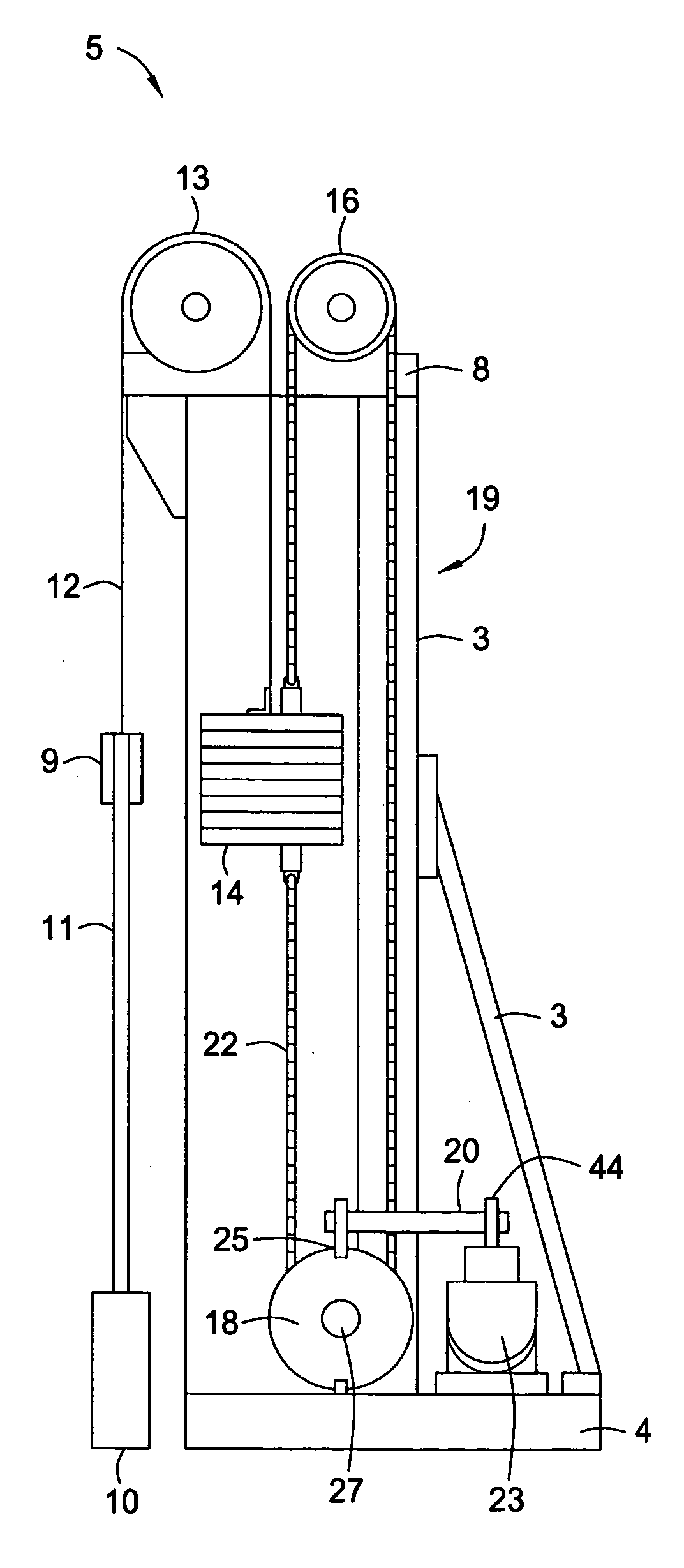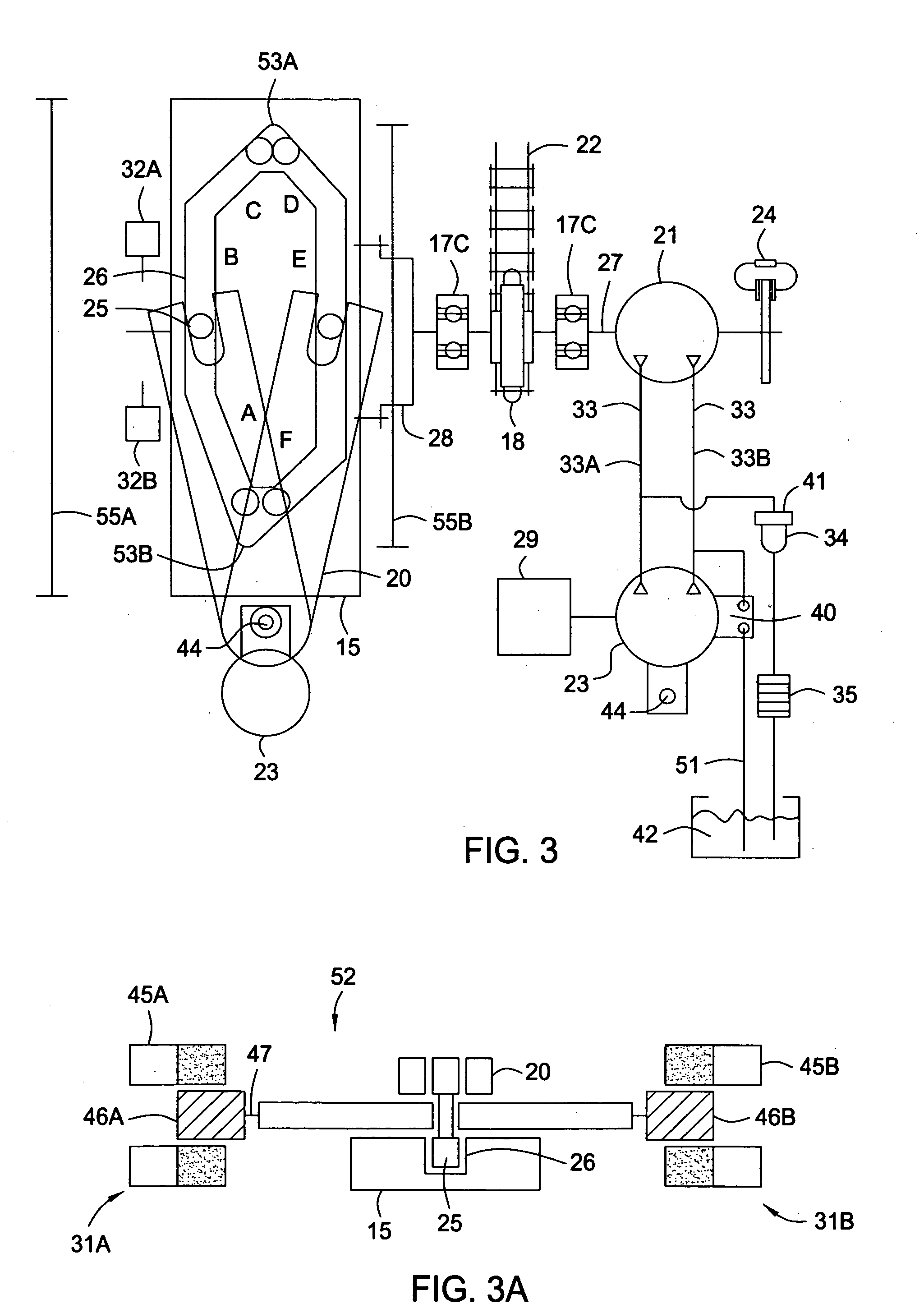To access
hydrocarbon fluid within a well, it is often necessary to
drill a wellbore to a high depth within the formation, often termed a “deep well.” Pumping fluid from deep wells using a
sucker rod lifting
system is problematic for several reasons.
First, the downhole positive displacement pump is submerged in the downhole fluid so that the positive displacement pump may fill with the surrounding production fluid upon reciprocation of the rod string, and because the
fluid level of a deep well is typically located at a high depth within the wellbore, the rod string which connects the positive displacement pump to the drive mechanism must be long to access the fluids.
Therefore, the high length of the rod string as well as the material which makes up the rod string causes the rod string to weigh a large amount.
The length of the motion of the rod string and the weight of the rod string cause the rod string to possess a
high momentum at the end of the up-
stroke and down-
stroke, often causing the rod string to deform or break when motion is stopped between the up-
stroke and down-stroke (at the “turnaround”).
Specifically, the elastic nature of the material of which the rod string is constructed makes the rod string vulnerable to rod stretch, especially at the turnaround between the down-stroke and the up-stroke where the
momentum of the rod string is most difficult to stop.
Moreover, the stresses imposed on the rod string by a mismatch between the dynamic characteristics of the surface drive unit and the rod string may cause the rod string to break.
Generally, rod string motion problems include premature rod string separation due to
material fatigue, damage to the well tubing in which the rod string reciprocates and instantaneous rod string loads beyond the design limit due to suddenly applied loads from dynamic mismatch.
The downhole pump efficiency is affected by unfavorable rod string motion in other ways.
Rod string motion problems, including rod string damage, tubing damage, and only
partial filling of the pump, increase as the load on and speed of the rod string are increased.
Sucker rod lifting systems include the additional problem when the well is pumped down to the point where fluid only partially fills the downhole pump
barrel during the up-stroke of the rod string.
Another problem with deep-well sucker rod lifting systems is that the difference between the loading on the rod string during the up-stroke and the loading on the rod string during the down-stroke is severe.
This uneven loading requires a massive amount of
horsepower for the drive mechanism to lift the rod string on the up-stroke, while limited
horsepower is necessary for the rod string to fall into the wellbore on the down-stroke.
Uneven loading in deep well pumps constitutes an inefficient use of
horsepower because of the high amount of work expended in moving the rod string upward which is then not recovered upon the rod falling downward.
Similarly erratic, on the down-stroke, the loading drastically decreases to point R from point K, then increases to point S, then decreases again before increasing back to point J. This erratic loading on the rod string often stretches, breaks, or otherwise damages the rod string.
Additionally, this erratic loading does not make efficient use of the horsepower which drives the drive mechanism.
While the inter-cyclic speed is good for this drive mechanism, as is evidenced by the favorable rod string motion profile shown in FIG. 5B, the loading on the rod string at the turnarounds of the rod string is not desirable.
The jarring of the rod string also causes damage to the rod string, which may include breaking or stretching of the rod string.
The amount of time the rod string spends at the top and the bottom of the stroke is not long enough to produce a good, smooth turnaround.
A problem with the mechanically-driven pumping units is that gear-driven pumping units are not very responsive to speed changes of the polished rod.
Gear-driven pumping units possess
inertia from previous motion so that it is difficult to stop the units or change the direction of rotation of the units quickly.
Therefore, jarring (and
resultant breaking / stretching) of the rod string results upon the turnaround unless the speed (strokes / minute) of the rod string during the up-stroke and down-stroke is greatly decreased at the end of the up-stroke and down-stroke, respectively.
Gear-driven pumping units also are not sufficiently responsive to speed changes because of the tendency of the belts to burn up at abrupt speed changes and at high speeds and the torque limitations of gear reducers present in these systems.
Decreasing of the speed of the rod string for such a great distance of the up-stroke and down-stroke decreases the speed of fluid pumping, thus increasing the cost of the well.
 Login to View More
Login to View More  Login to View More
Login to View More 


